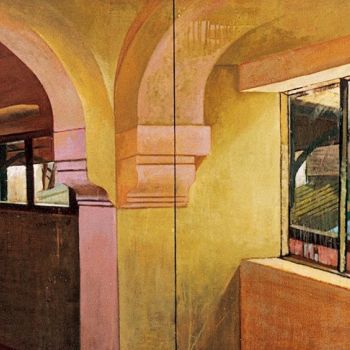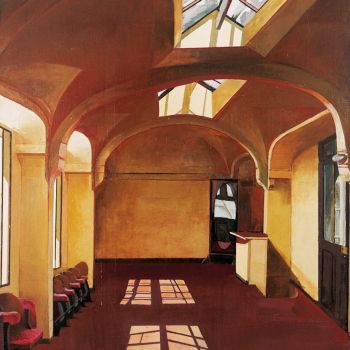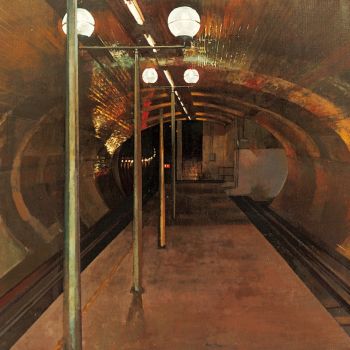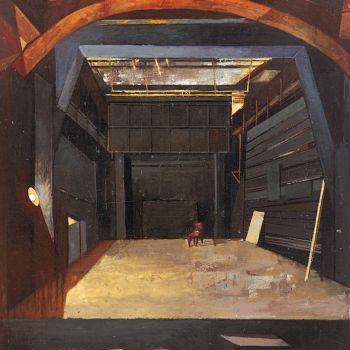







When Irini started painting in her small room, at the 14th arrondissement of Paris, she made her first steps by describing a familiar world. The four walls amongst which she spent most of her days became her canvas; the very background in which she displayed all kinds of everyday life objects and ephemera: armchairs, boxes, umbrellas, easels, stretchers and canvases and even some figures of angels bought in flea markets. Everything was carefully and earnestly drawn. The perspective was correct and the colours, sensual. At first, one could easily imagine that Irini was contented with a realistic depiction of her objects.
We shall not cease for exploration and the end of all our exploring will be to arrive where we started and to know the place for the first time.
T.S. Eliot, Four Quartets
The Avant-garde artists at the beginning of this century, claimed mainly for authenticity as a fundamental right. However, post-modern artists may no longer rely on such a concept. The only thing they can do is to ‘re-invent’ this authenticity, since any possibility for primary conception is a priori excluded. Nowadays, every idea is featured as ‘re-used’, while ‘re-creation’ is the rule. Quoting Jean-François Lyotard, contemporary culture is massive to an extent that it excludes any kind of authentic experience, while every experience seems like a retrospection to past times and generations.

